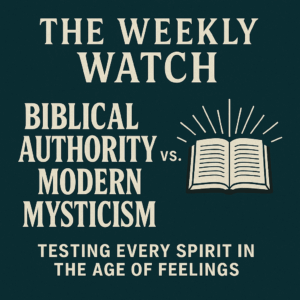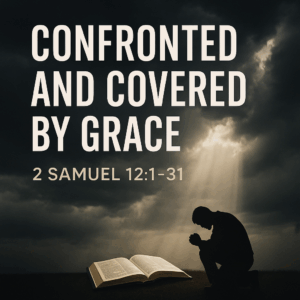⏱️ Estimated Reading Time: 7 min read
Should We Be Celebrating?
This time of year many Protestants celebrate the Reformation. For some, however, it feels odd to “celebrate” an event that divided the church. Didn’t Jesus pray for the church’s unity? Others have no difficulty celebrating the Reformation, seeing it as the starting point of all that they value in church history.
What is the best way Protestants today should look back on the Reformation? Should we think of it more like a happy birth or an ugly divorce?
Wisdom favors a balanced attitude that can appreciate the gains achieved by the Reformation while accurately appraising its context and goals. To this end, here are five myths about the Reformation that we should avoid.
Myth #1: The Reformation was a rebirth of the church.
Some portraits of the Reformation give the impression that the church had died and then came back to life. The Reformers themselves certainly did not think this way. They affirmed that God had always preserved his church, even in the seasons of darkest corruption, and they cast their efforts as her reformation, not her rebirth.
Martin Luther, for example, was adamant that the true church had never died, and he qualified his criticisms of the Church of Rome to reflect this concern: “Today we still call the Church of Rome holy and all its sees holy, even though they have been undermined and their ministers are ungodly. . . . It is still the church.” Similarly, John Calvin rejected the notion that the church “has been lifeless for some time,” and argued from Matthew 28:20 that “The church of Christ has lived and will live so long as Christ reigns at the right hand of the Father.”
Later Protestant theologians developed this notion of the preservation of the church, often in response to Roman Catholic criticism of novelty. Francis Turretin, for instance, argued that “our church was in the papacy itself, inasmuch as God always preserved in the midst of Babylon a remnant for himself according to the election of grace.” Such claims distinguished the magisterial Reformation, and the traditions it spawned, from the more radical separatism of the Anabaptists.
Myth #2: The Reformation was a rejection of the past.
The Reformation is sometimes construed as though the Protestants were arguing from the Bible, while the Catholics were arguing from tradition. In fact, much of the Protestant polemic was based upon the testimony of the early church. John Calvin was particularly adept at wielding the church fathers in this way, both in writing in and in debate. In his prefatory letter to King Francis in the Institutes, for example Calvin documented an extensive list of issues on which the church fathers stood on the Protestant side over and against the Roman Catholics. John Jewel’s 1562 Apology for the Church of England made the same appeal, establishing Protestant views of Scripture and the church from a variety of patristic sources.
Leaving room for qualification, we might say that the Reformation was intended as a recovery of the early church, rather than its rejection. In his 1539 debate against Cardinal Sadoleto, Calvin made this exact point: “all that we have attempted has been to renew the ancient form of the church. . . . [that existed] in the age of Chrysostom, and Basil, among the Greeks, and of Cyprian, Ambrose, and Augustine, among the Latins.”
Myths #3: The Reformation was without precedent.
Luther was not the first to protest abuses in Rome. He followed in a long tradition of dissent. The most obvious examples, perhaps, would be John Wycliffe (d. 1384), the so-called “morning star of the Reformation” in England, and Jan Hus (d. 1415), the Bohemian Reformer. Hus was significant in the Bohemian Reformation, which was a tradition of protest against Rome that stood separate from Martin Luther, beginning in the late fourteenth century in Prague and continuing on through the military expeditions of the Hussites (one faction of which would eventually become the Moravians).
There are also other traditions of dissent going further back, such as the Arnoldists (followers of Arnold of Brescia) and the Waldensians (followers of Peter Waldo) in the twelfth century, or the Albigensians in the twelfth and thirteenth centuries. Leaving room for differences between these various groups, there are still striking points of overlap with the later Protestant dissent. Francis Turretin, for example, called the Waldensians and Albigensians “purer Christians” and claimed that they “held the same faith with us in essentials.” Turretin also drew attention to protest against the abuses of Rome that came not from separatist groups but from within the church, such as the condemnation of the worship of icons at the Council of Frankfurt in 794, or opposition to transubstantiation by Ratramnus in the ninth century and by Berengar of Tours in the eleventh century.
Myth #4: The Reformation divided a unified church.
The Reformation is often faulted for its divisiveness, and it is undeniable that Protestantism has resulted in a huge variety of denominations. Moreover, sadly, many modern Protestants operate with a sectarian mindset that seems uninterested in pursuing unity with other traditions within the body of Christ.
At the same time, it is misleading to think that disunity began at the Reformation. In the first place, the Reformers inherited a church already divided. Tensions between the eastern and western branches of the church had been brewing since early on in church history, finally resulting in an official split in 1054, half a millennium prior to the Reformation. Moreover, the late medieval Roman Catholic Church was a diverse entity, rife with its own internal tensions and divisions.
All of us—Protestant, Catholic, or Orthodox—should long for the unity of the church, lament the divisions within her, and own our contributions to the challenges. But it is not right to suppose that only the Protestants are at fault. As we work toward the unity of the church, we must recognize that true unity is never achieved through laxity about truth.
Myth #5: The Reformation is no longer relevant.
Some today are calling for an end to the Reformation. And, to be sure, there have been important advances made in Protestant-Catholic dialogue during the last several decades—consider, for example, the Lutheran-Catholic 1999 Joint Declaration on the Doctrine of Justification, or the second publication produced by Evangelicals and Catholics Together. Protestants and Catholics may also find new occasions to stand together on various social causes in response to the increasing secularization of western society.
At the same time, theological differences remain over a range of important issues, and it is not divisive or uncharitable to draw attention to such differences. As J. Gresham Machen put it, “It is often said that the divided state of Christendom is an evil, and so it is. But the evil consists in the existence of the errors which cause the divisions and not at all in the recognition of those errors when once they exist.”
As we work toward the unity of the church, we must recognize that true unity is never achieved through laxity about truth. When our theological differences concern issues that are vital to the gospel, we must be willing to say, with Luther, “Here I stand; I can do no other.”
This is a guest article by Gavin Ortlund author of Theological Retrieval for Evangelicals: Why We Need Our Pastor to Have a Future. This post originally appeared on crossway.org; used with permission.




